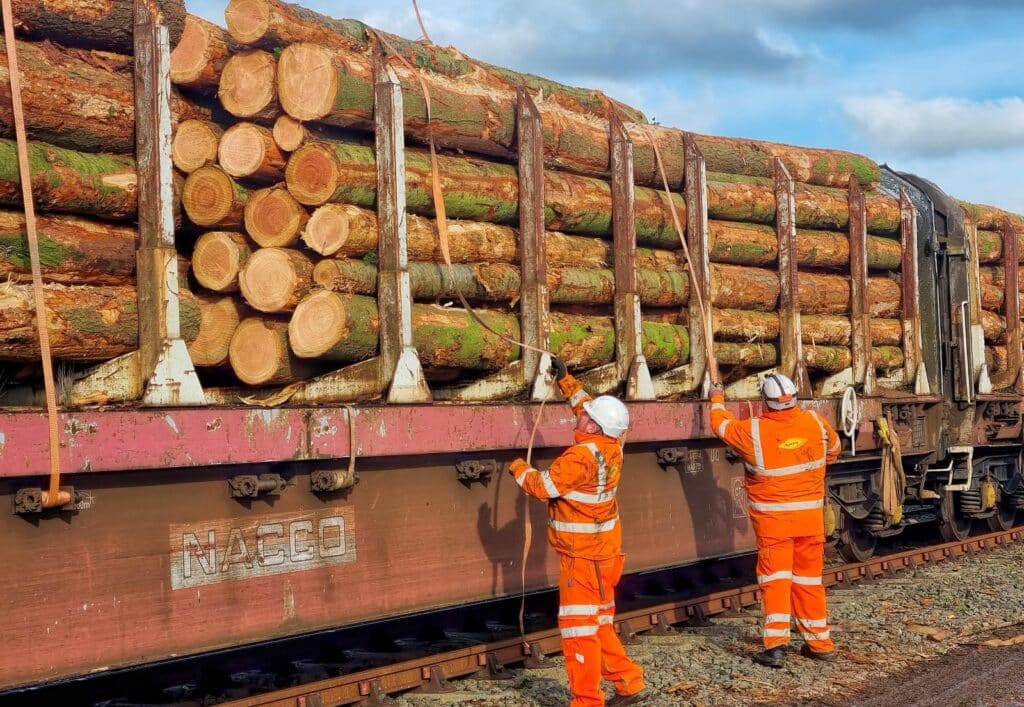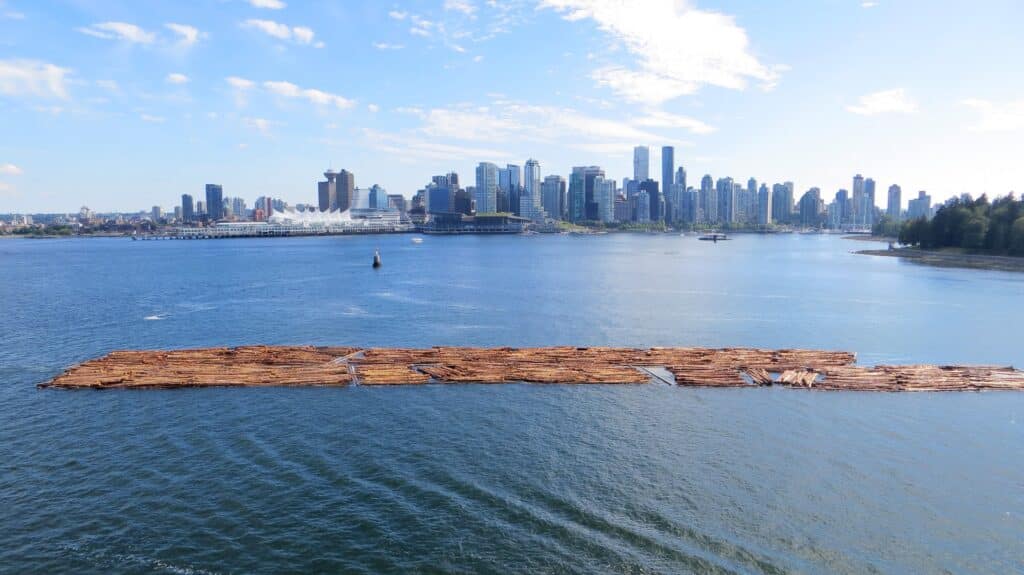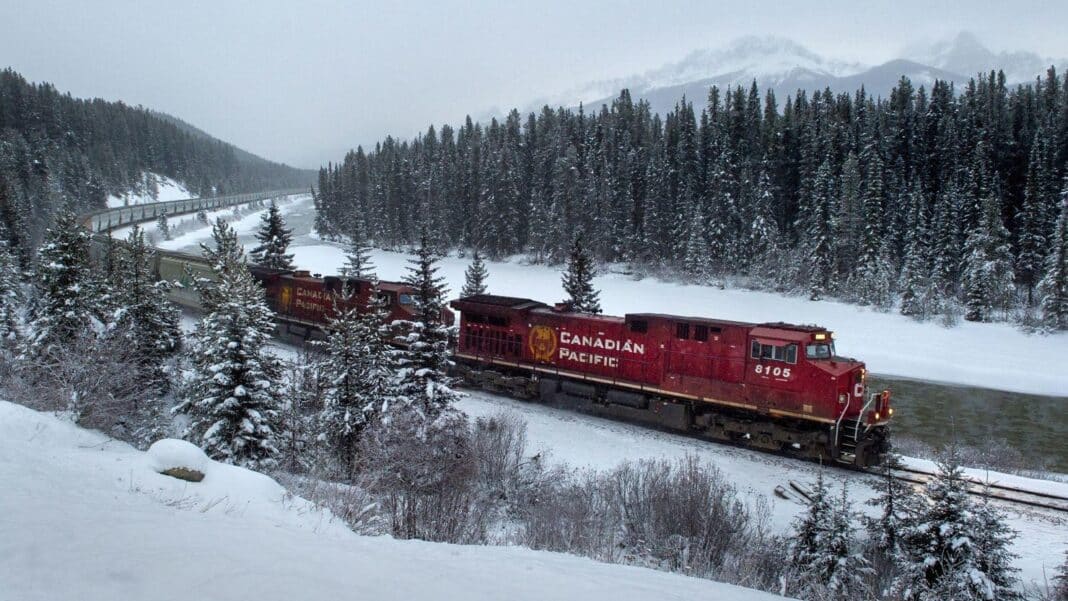Huge volumes of timber freight are back being transported via Canada’s extensive railway network after the Canadian Industrial Relations board called off strike action – causing more than 9,300 Canadian rail workers to return to work.
It comes after Wood Central revealed that the decision by Teamster unions, the Canadian National Railway (CN), and Canadian Pacific Kansas City (CPKC) was poised to create massive delays for timber not just at the port in Vancouver but across North America, Asia, and the Far East.
According to Paul Boucher, president of the Teamsters Canada Rail Conference, the union would now work with other labour groups as it mounts a legal challenge to a Saturday decision that halted work stoppages at the country’s two largest railways and imposed arbitration.
While the Teamsters have vowed to obey the order to return to work, the union has warned that it could lead to future contract imposition, eroding workers’ bargaining power. “Any federally regulated company, it’s a win for them at this point,” Boucher told Reuters in his first interview since the Thursday lockout. “This is disastrous for labour, for workers.”
Wood Central understands that the federal government-appointed Canada Industrial Relations Board made the decision after Labour Minister Steven MacKinnon asked on Thursday to end an impasse after talks between the Teamsters, Canadian National Railway and Canadian Pacific Kansas City.
MacKinnon: Resolving the dispute is critical to protecting $1B a day trade
Announcing the move from Parliament Hill, MacKinnon said he is invoking powers under Section 107 of the Canada Labour Code to direct the Canada Industrial Relations Board (CIRB) to “assist the parties in settling the outstanding terms of their collective agreements by imposing final, binding arbitration.”
MacKinnon has also ordered the board to extend the term on the parties’ current collective agreements until new deals are signed and is calling for operations on both railways to resume “forthwith.”
“Canadians must be assured that their government will not allow them to suffer when parties do not fill their responsibility to them at the bargaining table, especially where worker and community safety is at stake,” he said, following a day of key meetings with stakeholders.

In a first-ever simultaneous work stoppage, Canadian National Railway (CN) and Canadian Pacific Kansas City (CPKC) locked out Teamsters Canada rail workers early Thursday morning after months of failed negotiations, where safety issues, wages and what the union called a “forced relocation scheme” for workers were top issues in the talks.
The unprecedented labour dispute snarled supply chains and complicated commutes for thousands across Canada.
Contract talks continued as picket lines went up, demonstrators marched in front of the rail companies’ headquarters in Montreal and Calgary, and thousands of railcars carrying a range of goods sat parked.
At the same time, business groups, impacted industry leaders, as well as some premiers pressed the federal government to act given the critical transport lines – when running – carry more than $1 billion worth of goods each day, according to the Railway Association of Canada.
On Sunday, when MacKinnon announced he’d be stepping in, an agreement between the parties remained “elusive.
The minister—just over a month into the job—told reporters: “Collective bargaining negotiations belong to these parties, but their effects and the impacts of the current impasse are being borne by all Canadians.
“As minister of labour, I’m using my authority to secure industrial peace and deliver the short- and long-term solutions that are in the national interest.”
It remains unclear when exactly rail operations will resume. However, the minister expressed hope it will be within a few days, as the impacts on the daily lives of millions of Canadians and the economy “cannot be understated.”
MacKinnon said the lack of clarity is because, as an arms-length body, the CIRB must now consult with the parties involved before deciding on the next steps.
“I’m acting at a very early stage here and hoping they will act with similar dispatch … but again, I want to be deferential to the process that will unfold here,” he said.
In response to the federal government forcing arbitration, CN ended its lockout and said it is now working on a “recovery plan,” as the company is “satisfied that this labour conflict has ended.”

Why railways are critical for British Columbia’s CA $6 billion timber economy
On Friday, Wood Central reported that if the strike was successful, up to 85% of West Fraser freight transported by rail into the United States and shipped into the Far East and Asia could be stranded.
According to Joyce Wagenaar, West Fraser Timber’s spokesperson, there is not enough trucking capacity to replace rail traffic volume, warning that the timber giant may need to slow down production until a resolution can be reached: “In the event of a rail disruption, decisions around future production may be required.”
The urgency stems from Canada’s overdependence on rail to meet demand. The world’s ninth-largest economy exports 75% of its goods into the United States (including more than 80% of forest products) via rail. Wood Central understands that a prolonged dispute could disrupt shipments of a wide range of goods, from grains and beans to potash, coal, and timber.
As it stands, more than 9.74 million cubic metres of lumber (or 83.4% of total lumber) was traded from Canada to the United States for the first four months of 2024 alone. In addition, huge volumes of OSB (oriented strand board), plywood, and engineered wood products are exported from manufacturers like West Fraser Timber into the United States.
- For more information about the strike action, click Wood Central’s special feature from earlier this week.






